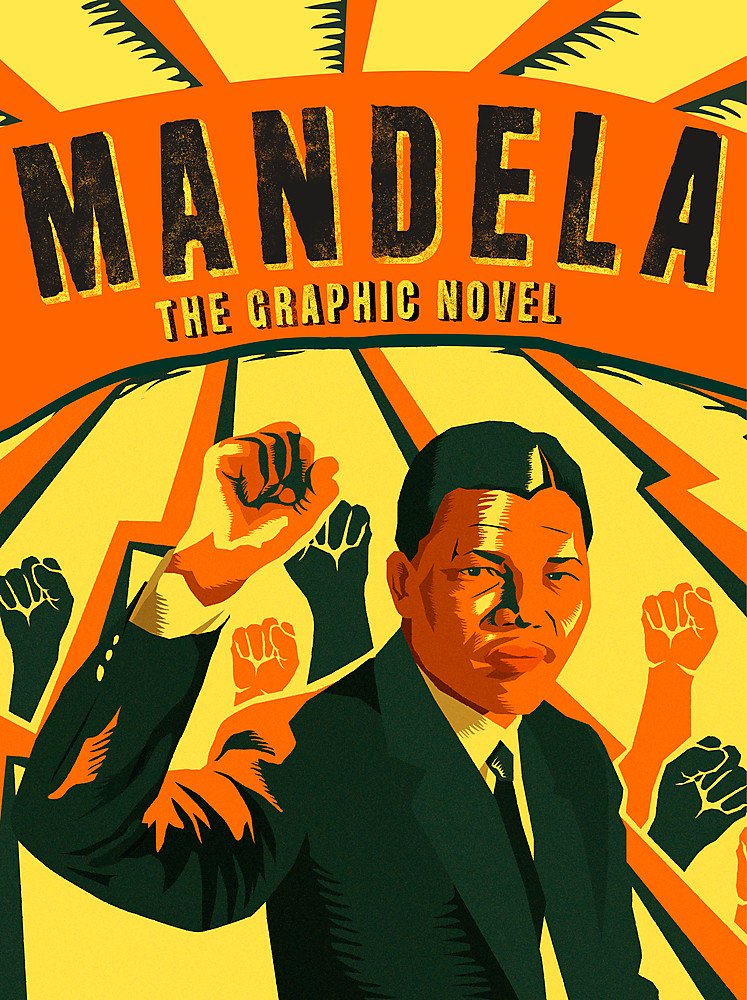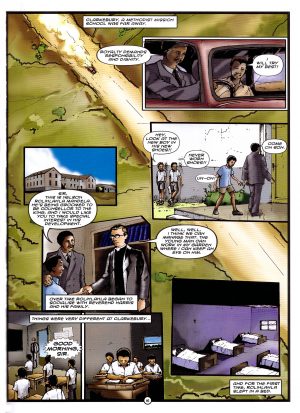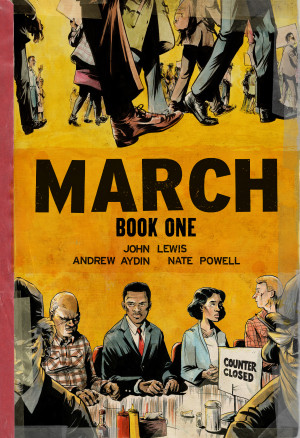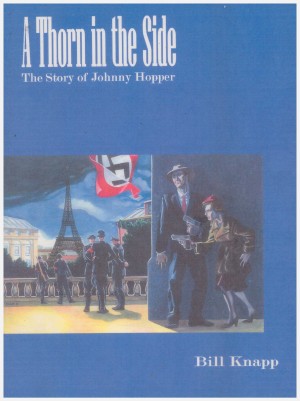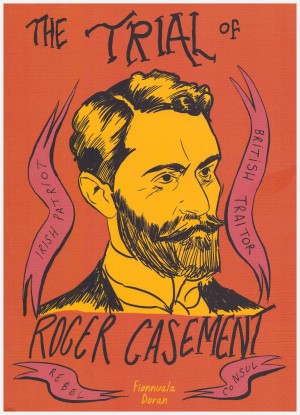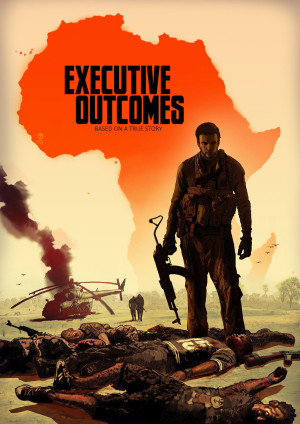Review by Frank Plowright
Few people can rank worthier than Nelson Mandela as subjects of a graphic novel biography. He was instrumental in changing an appalling bigoted and repressive South African regime, eventually becoming president, yet not before spending well over a quarter of his life imprisoned. No modern day statesman has a story anywhere near as compelling, and the recounting of it should be inspiring.
It’s odd firstly to discover the biography of an individual who inspired a nation has been produced by committee, crediting organisations the Nelson Mandela Centre of Memory and Umlando Wezithombe. It’s only disclosed by reading the final page acknowledgements that Santa Buchanan and Andrew Smith are responsible for the script, with Buchanan and Pitshou Mampa laying out the pages, and Mampa with Pascal ‘Freehand’ Nzonzi and Sivuyile Matwa producing the pencils. The three pencillers are also credited for inking and colouring along with three others. It goes a long way to explaining the vastly uneven content.
That standards are low is a great shame, as there’s much to be learned in almost two hundred pages, not least that Nelson was a name given to Mandela at school, the name his parents chose being Rolihlahla. He grew up in South Africa’s 20th century apartheid regime, and the iniquities are laid out with informative detail. It’s explained how institutionalised racism resulted in so many petty daily inconveniences and indignities, and how the deck was stacked against fairness in a regime where all else stemmed from skin colour. There’s also enlightenment at the end as the complexity of power transfer to the majority in South Africa is negotiated.
For all the good, however, too much of the biography skims through marking points, but without offering clarification. Why was it important that student elections were boycotted on pain of expulsion? How did Mandela’s father die so young? What exactly were the Pass Laws? Voerward is mentioned frequently, yet only halfway through the book do we learn he was South Africa’s Prime Minister. Notes are supplied in the back of the book, but would have been better placed on the pages concerned. A sure sign of a product by committee is the incessant desire to credit everyone in story, resulting in a parade of names in single panels lacking significance to the bigger picture. Yes, the writers have done right by every single person Mandela met, yet in doing so they’ve ensured the majority of the readership will be bored. It’s a fundamental flaw.
It’s a further shame the design and colour sense that produced such a striking cover doesn’t extend to the content, where the flow of story from panel to panel is awkward, the page layouts dull and the sense of colour unsophisticated. While the artists are poorly credited, it’s possible to distinguish the styles, and the person who drew scenes beginning with Mandela meeting future wife Winnie is the best of them. There’s a greater delicacy to their figures and they take more care with the facial features.
Mandela the Graphic Novel is a missed opportunity. Mandela’s story is by turns terrifying and inspirational, yet it’s rendered dull by people unable to see the wood for the trees.
